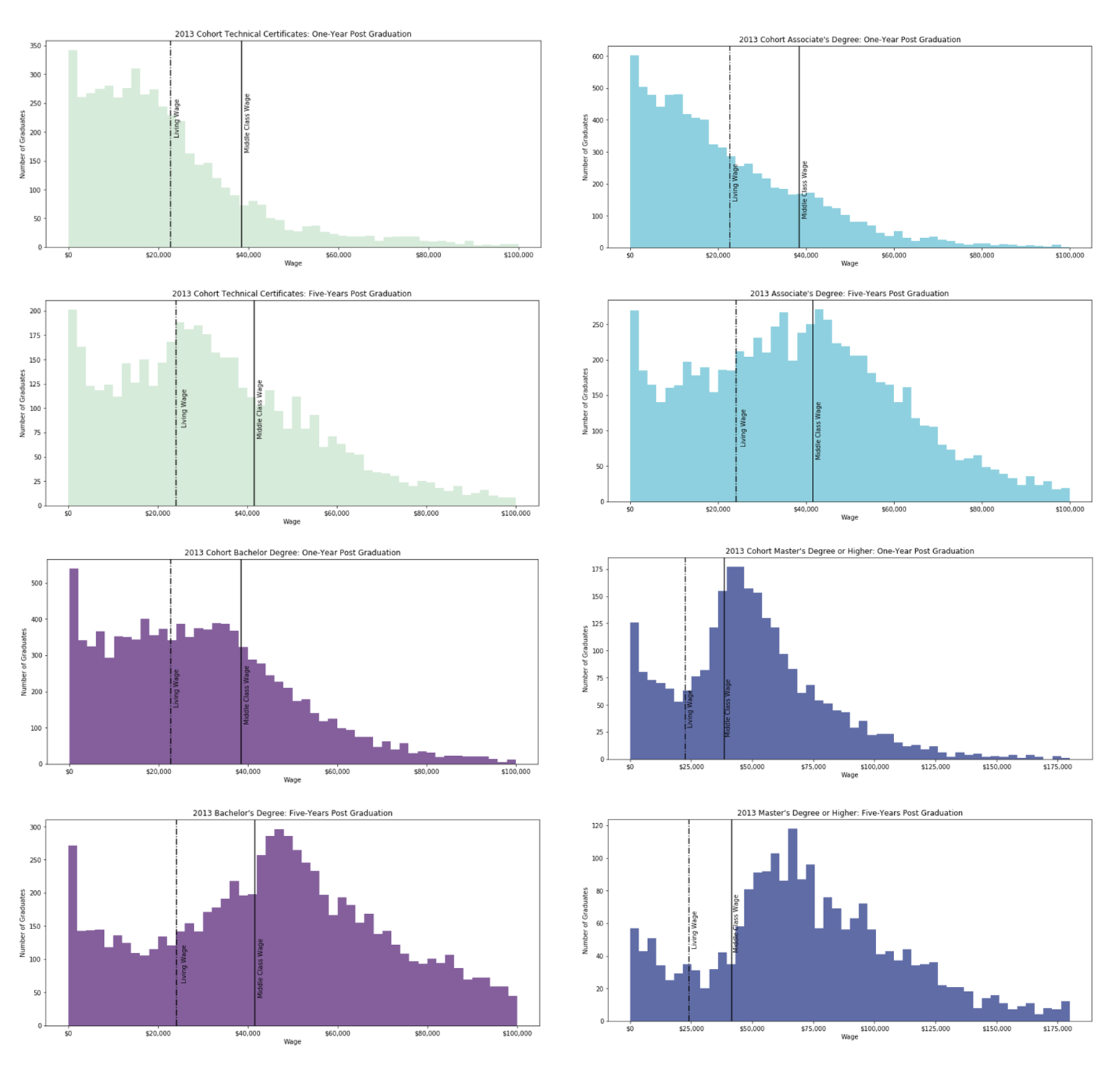The Impact of Education in Utah
Skylar Scott, Senior Researcher
September 24, 2020

Photo by McElspeth
From your last microeconomics course, you may remember human capital is measured by the “accumulated training and education of workers.” (Miller, 2020) This training and education leads to higher output, which in turn, compels employers to pay higher wage. Simply put, higher educational attainment typically accompanies higher pay.
This theory, among other topics, is explored in UDRC’s new report on “Increased Spending from Post-Secondary Graduates in Utah.” The study separates recent Utah graduates by educational attainment and examines wages one and five years after graduating. Wage data is then binned from individual observations into histograms to understand how education and time in the labor force affect graduate wages. Living wage and middle-class wage thresholds, which are derived from a cost-of-living index, are referenced on top of the histograms to provide context to income patterns.
This exercise can be seen below for the 2013 cohort. Only graduates from Utah’s System of Higher Education (both academic education and technical colleges) are represented. A more detailed interactive dashboard with multiple cohorts and degree types can be found in the data narrative for this project .

Those with a technical certificate are light green, associate degrees are turquoise, bachelor’s degrees are violet, and master’s degree or higher is represented in blue. Without exception, a greater percentage of graduates make it past both living-wage and middle-class wage thresholds with higher degrees of educational attainment. As graduates gain experience with 5 years in the workforce, more individuals earn living- and middle-class wages. In harmony with the previously discussed labor economics theory, median wage also increases as graduates obtain higher degrees of educational attainment.
The increase in wage from higher educational attainment changes consumption patterns as well. Because money is available to pay for more than basic necessities, spending increases in categories like recreation, entertainment, savings, and food outside of the home (restaurants).
I hope this report and narrative can illustrate the impact higher education has in the life of Utah residents for both educators and students. To take a deeper dive into the results of the research, the data narrative and report can be found at: https://udrc.utah.gov/increased_spending/index.html
References
Miller, R. L. (2020). Economics Today: The Micro View (20th ed.). Hoboken, NJ: Pearson.